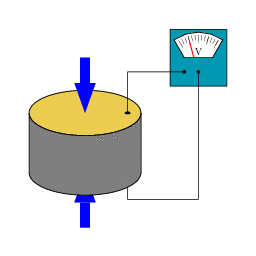Sound Navigation And Ranging (SONAR) is a technology or method used to detect and locate underwater remote objects and structures by transmitting or emitting sound waves and detecting them when they are reflected off of items.
SONAR is a detection system that allows to view what eyes can’t see.
The active sonar system includes a Transmitter (Projector) or an acoustic Transducer, which creates the sound wave to be sent to the object or target, and a Receiver (Hydrophone) sensor which provides detected sound and amplification of the returned signal.
A transducer is a device that converts acoustic energy or sound into electrical energy or voltage and current, and vice versa.
Acoustic Transducers are realized using Piezoelectric composites, because they are very sensitive. These materials are composed of an active piezoelectric phase and a passive phase, generally a polymer (lightweight and small in size) or air. The word piezoelectric (from Greek piezein) means to squeeze or press.

A Piezoelectric Transducer or piezoelectric sensor is a device that uses the “piezoelectric effect or piezoelectricity ” to measure changes in pressure and converts mechanical energy into electrical energy and mutual conversion.
In other words, if a mechanical pressure is applied to a piezoelectric crystal, its structure deforms and a crystal capable of conducting an electrical current is obtained. If an electric current is applied to the piezoelectric crystal, the crystal will expand and contract, converting electrical energy into mechanical energy.
The piezoelectricity is the property of a substance to produce electricity if a squeezing, bending or twisting is applied to it. There are various artificial and natural piezoelectric materials that can conduct an electric current, the most well known is the quartz crystal.
In the case of SONAR, the piezoelectric element generates and perceives sound waves.
Jessica Moro
DSO
Image
Cover: Sidescan sonar image – unidentified vessel by Wessex Archaeology
Article: Schemapiezo



